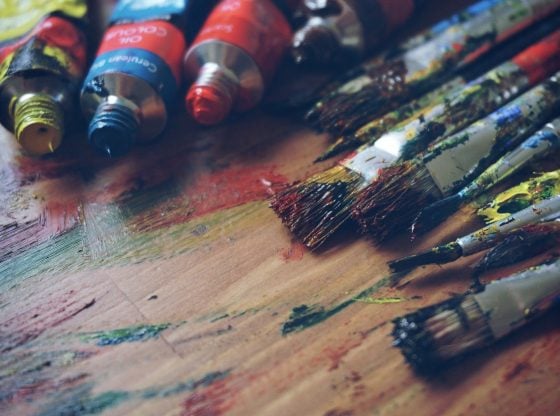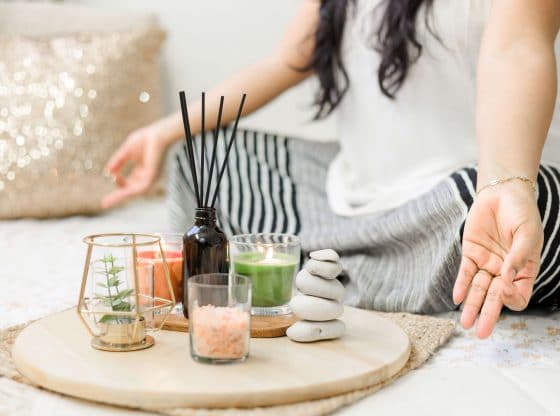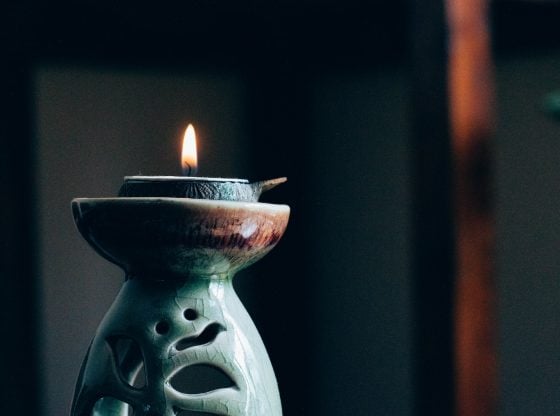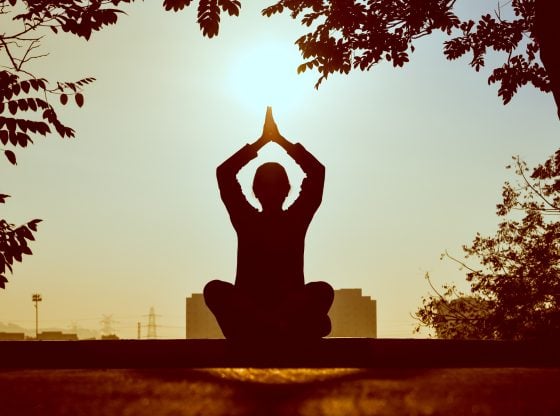There’s a reason why you painted your bedroom peacock blue, eat off pale yellow dishes, and opted for pink roses at your wedding — it’s because you like the way those healing colors make you feel. Different hues can change the way we think and react in different situations. This is what’s known as color therapy. Chances are you already know how to use it in one form or another without even realizing it, but once you sharpen your skill set, you’ll see that it has tremendous healing powers.
What Is Color Therapy?
Color therapy — otherwise known as chromotherapy or chromopathy — is an alternative treatment that relies on colors and frequencies to help treat physical, emotional, and mental conditions within the body by balancing energy centers known as chakras.
The concept of color therapy goes back to when ancient Egyptians relied on sun-activated solarium rooms for remedial reasons. They believed that when light and various colors (used via the sun and clear glass mosaic tiles at the time) had incredible healing properties. While today’s treatments are more modernized (think color-infused saunas), the treatment’s goal is the same.
Methods For Delivering Color Therapy
Salons, spas, and alternative therapy centers offer CT, so try finding a modality that suits your comfort level and interest. Perhaps that’s a massage or facial treatment with different projections of light or a relaxation pod where you can change the hue based on the mood you’re trying to achieve. Some practitioners will even place different colors of silk (or another fabric) on your chakras to help adjust your emotional well-being. However, one of the easiest ways to practice light therapy is simply looking at the color for a few minutes and waiting for its therapeutic effects to heal you. What makes someone feel fantastic may make someone else feel drained or stressed. With that said, it’s an individualized type of treatment.
What Are The Healing Colors?
Whether you realize it or not, healing colors are also associated with the different chakras within your body. For example:
Red: The Root Chakra
- Red: Red is one of the most stimulating colors; therefore, it should be avoided by anyone with a mental illness or is easily agitated. With that said, It’s typically reserved for physical healing.
- Chakra Location: Base of the spine.
- Connection: Grounding connection with the earth.
- When Blocked: You’ll feel as though you’re standing on shaky ground, and everything and everyone appears as a threat.
Orange: The Sacral Chakra
- Orange: This fiery hue signifies pleasure, well-being, sexuality, and abundance. It can increase mental energy or mind-body connection or stimulate different organs in the body for healing purposes. It should be avoided if you’re prone to anxiety.
- Chakra Location: Approximately two inches below the navel.
- Connection: The sacral (mind-body) chakra helps us relate our emotions to those of others. It’s connected to reproduction and pleasure.
- When Blocked: An imbalance could mean you feel lack of control, particularly in areas of a sexual and creative nature.
Yellow: The Solar Plexus Chakra
- Yellow: Sunny yellow encourages energy and action. It can promote happiness, intelligence, and wisdom. However, too much (or too-bright) of a yellow can be linked to cruelty and betrayal.
- Chakra Location: Upper abdomen close to the stomach.
- Connection: The solar plexus chakra is all about confidence, positivity, well-being, and empowerment.
- When Blocked: A blockage could make you feel as though you have overwhelming feelings of self-doubt and shame.
Green: The Heart Chakra
- Green: There’s a reason why you see green in doctor’s offices and spas. It’s the most balancing of all the colors, and it can improve one’s mood if they’re feeling down in the dumps. While it’s considered a safe color to start therapy with, if it’s too light, it can cause anxiety.
- Chakra Location: Right above your heart in the center of your chest.
- Connection: The heart chakra is the bridge between spirituality and materialism. It’s associated with the energy field, empowerment, compassion, and mental focus.
- When Blocked: When blocked, you can have a hard time opening up to others — selfishness may also be at play.
Blue: The Throat Chakra
- Blue: Blue can mean several different things. It signifies spirituality, loyalty, creativity, and wisdom. While it can make you feel more relaxed and peaceful (it’s often used in meditation practice), help you sleep better, and express your feelings, too much blue (or too dark) can spark feelings of depression.
- Chakra Location: The throat, of course.
- Connection: The throat chakra aids the heart chakra in that it controls your ability to communicate with others, giving you personal power over your voice.
- When Blocked: As you could imagine, when this chakra is blocked, it’s as though you don’t feel you have the ability to say what’s on your mind and heart.
Indigo: The Third Eye Chakra
- Indigo: A blend of purple and blue, indigo gives peace and intuition to a person, and it symbolizes knowledge. It’s best used in bedrooms and rooms where an individual is undergoing color therapy.
- Chakra Location: Forehead between the eyes.
- Connection: The third-eye chakra is linked to your ability to see the “big picture.” It influences your self-esteem, sleep cycles, wisdom, clarity, and intuition.
- When Blocked: When it’s blocked, it’s hard to connect to your intuition; this dramatically hinders your decision-making abilities.
Violet: The Crown Chakra
- Violet: This soothing, calming color eases mental and emotional stress. It encourages spiritual renewal.
- Chakra Location: The top of your head.
- Connection: As the name suggests, the crown chakra is the topmost chakra that represents your connection to spirituality. It’s associated with dreams, clarity, spirituality, and light sensitivity.
- When Blocked: You’ll know it needs to be cleansed when you experience feelings of emotional distress, disconnection (to people and things), and isolation.
How Does Color Therapy Support Healing?
Color therapy is used to treat illness and disorders, alleviate pain, and address emotional and mental conditions. When performed regularly, it can help one maintain good health and a balanced mind. To choose the correct colors, a color therapist will work with the recipient to determine the underlying cause of a physical or mental condition — one way to accomplish this is by asking this person what their favorite colors are. A therapist can also help a person understand how certain hues impact their daily lives from a healing, health, relaxation, and inspiration standpoint.
Looking For More Ways To Support Spiritual Healing?
Color therapy is just one of many ways to help you find or navigate your spiritual path. From guided imagery to shamanic healing to personal practice, there’s an option for everyone. Book a spiritual reading with one of our Psychic Center advisors to learn more about how to work on your emotional well-being.










